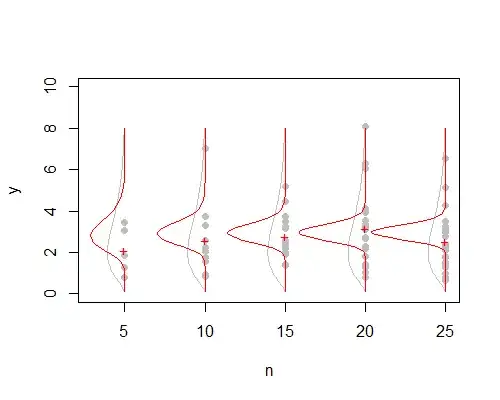I am looking at problem 5.01 relating to Galton's data on adult heights of fathers and sons, from Chapter 5 of Statistical Modelling: A Fresh Approach
link to this book: http://www.mosaic-web.org/go/StatisticalModeling/index.html
Can anyone explain me why Confidence interval is so different that coverage interval?
Prob 5.01. The mean of the adult children in Galton’s data is
> mean( height, data=Galton )
[1] 66.76069
Had Galton selected a different sample of kids, he would likely have gotten a slightly different result. The confidence interval indicates a likely range of possible results around the actual result.
Use bootstrapping to calculate the 95% confidence interval on the mean height of the adult children in Galton’s data. The following statement will generate 500 bootstrapping trials.
trials = do(500) * mean(height, data=resample(Galton) )
(a) What is the 95% confidence Interval on the mean height?
A. 66.5 to 67.0 inches.
B. 66.1 to 67.3 inches.
C. 61.3 to 72 inches.
D. 65.3 to 66.9 inches.(b) A 95% coverage interval on the individual children’s height can be calculated like this:
qdata(c(0.025,0.975), height, data=Galton)
2.5% 97.5%
60 73
Q: Explain why the 95% coverage interval of individual children’s heights is so different from the 95% confidence interval on the mean height of all children?
